Is Shimano about to reinvent the rear derailleur?
A new patent suggests a rear mech is in the works with increased ground clearance and improved wide ratio compatibility
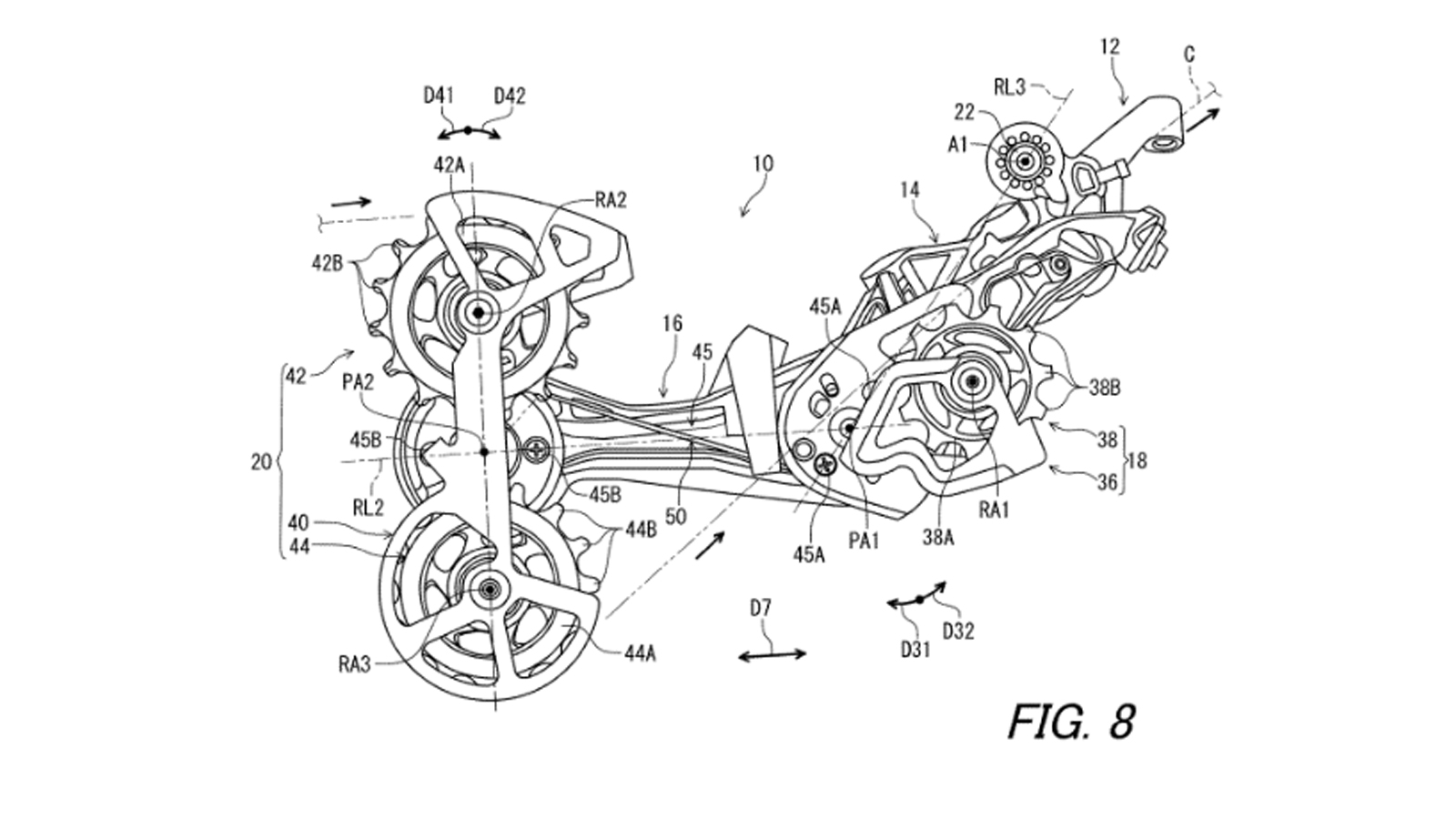
There have been countless innovations to the rear derailleur over the years. These have included compatibility with an ever-increasing number of sprockets, the introduction of indexed shifting, STI levers, clutches, the addition of electronics, and the recent shift to wireless to name just a few. Despite this, the basic form has remained largely unchanged from the original parallelogram design pioneered by Tullio Campagnolo in 1949.
Soon, that could all be about to change, as a recent patent application from market leaders Shimano suggests the brand is looking to reinvent the design.
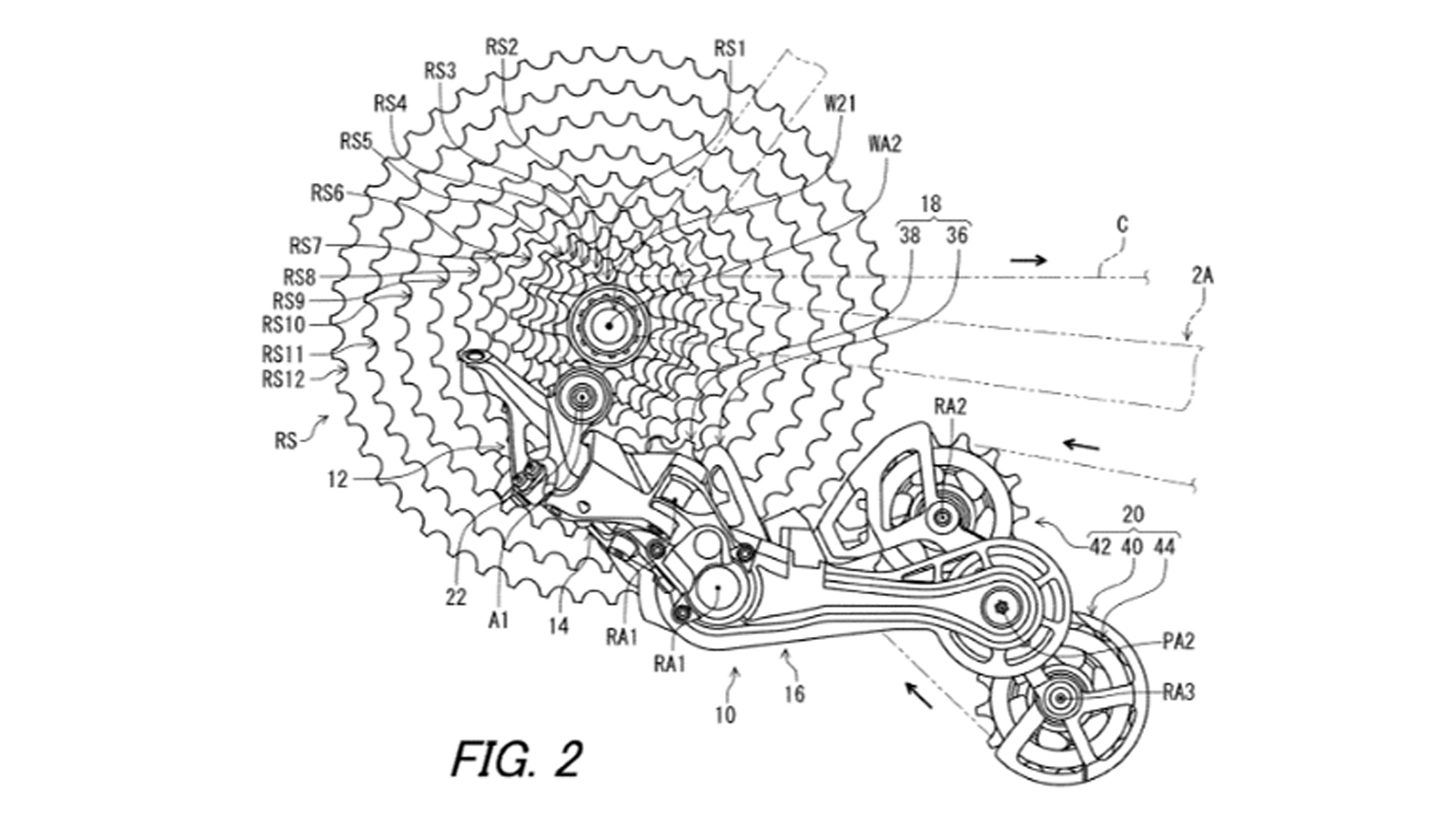
Within the application, Shimano states: "While a bicycle travels on uneven terrain, it is possible for the chain guide of the rear derailleur to hit rocks, ground and so on. Therefore, it is preferable to increase a distance between the chain guide of the rear derailleur and a road surface."
Put simply, the primary problem Shimano is aiming to solve is that of clearance between the derailleur and the ground. It's rare for road bikes to face such 'uneven terrain', so naturally, this suggests we're looking at a mountain bike innovation. The full-bike diagrams within the application affirm this assumption, but it would be feasible to expect the technology to trickle into gravel too if it makes it to production and gains popularity.
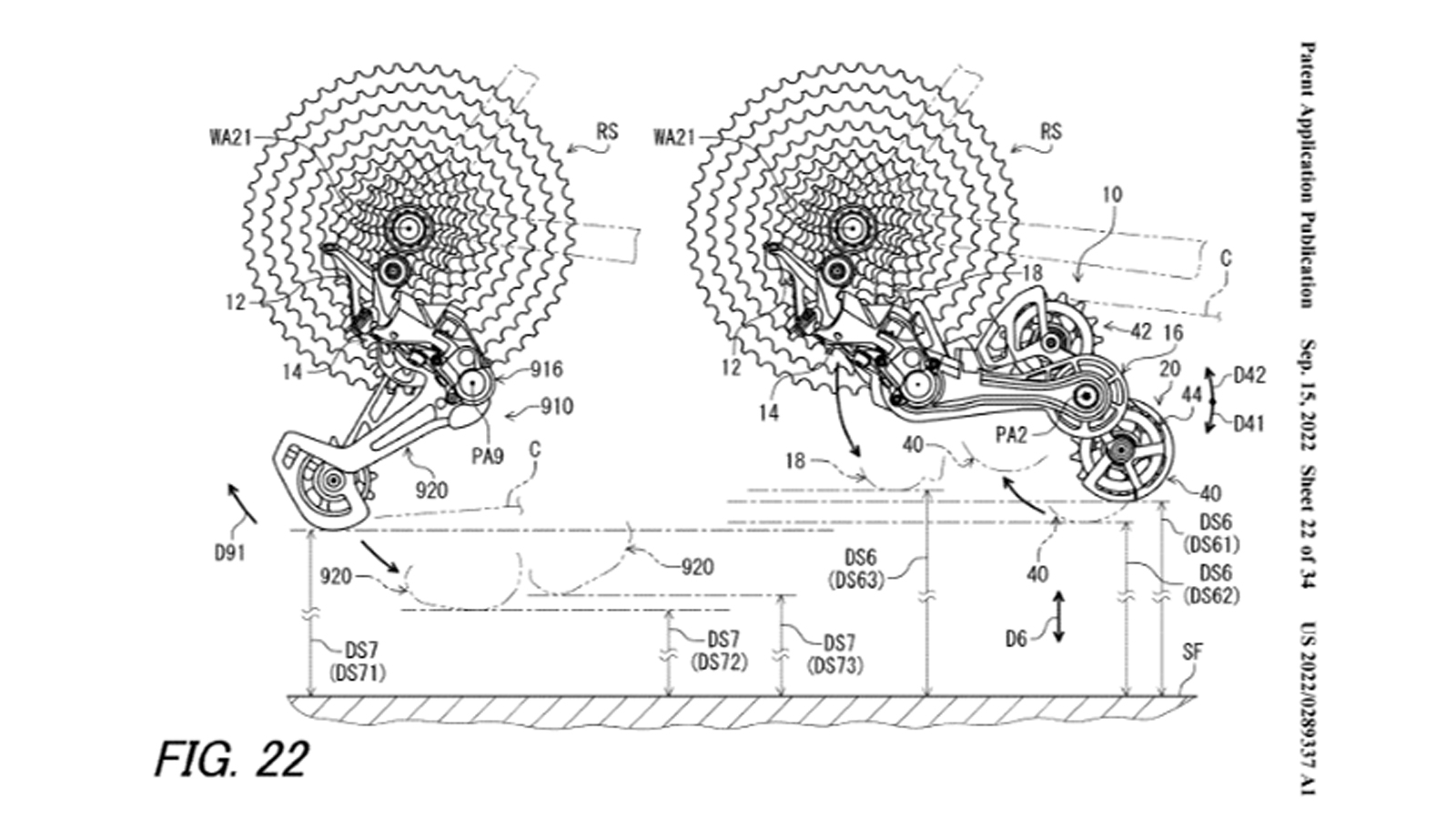
Shimano continues to say: "It is also the objective of the present invention to provide a rear derailleur which can be applied to a rear sprocket assembly having a wide gear range."
Our understanding here is that Shimano is looking to create a derailleur that can better handle wide cassette ranges, perhaps with an eye on making them even bigger than ever. Today's biggest mountain and gravel bike cassettes are available in ranges of greater than 40 teeth between the biggest and smallest sprockets. Given that one tooth is equivalent to one chain link, the length of chain required to work with a 50-tooth sprocket leaves a lot of slack when the rider changes to the smallest.
To combat this, the new design looks to retain a parallelogram functionality, but instead of a cage that extends downward from the upper pulley, this will extend forward to a pivot point, and a second cage that houses two pulley wheels - totalling three.
Get The Leadout Newsletter
The latest race content, interviews, features, reviews and expert buying guides, direct to your inbox!
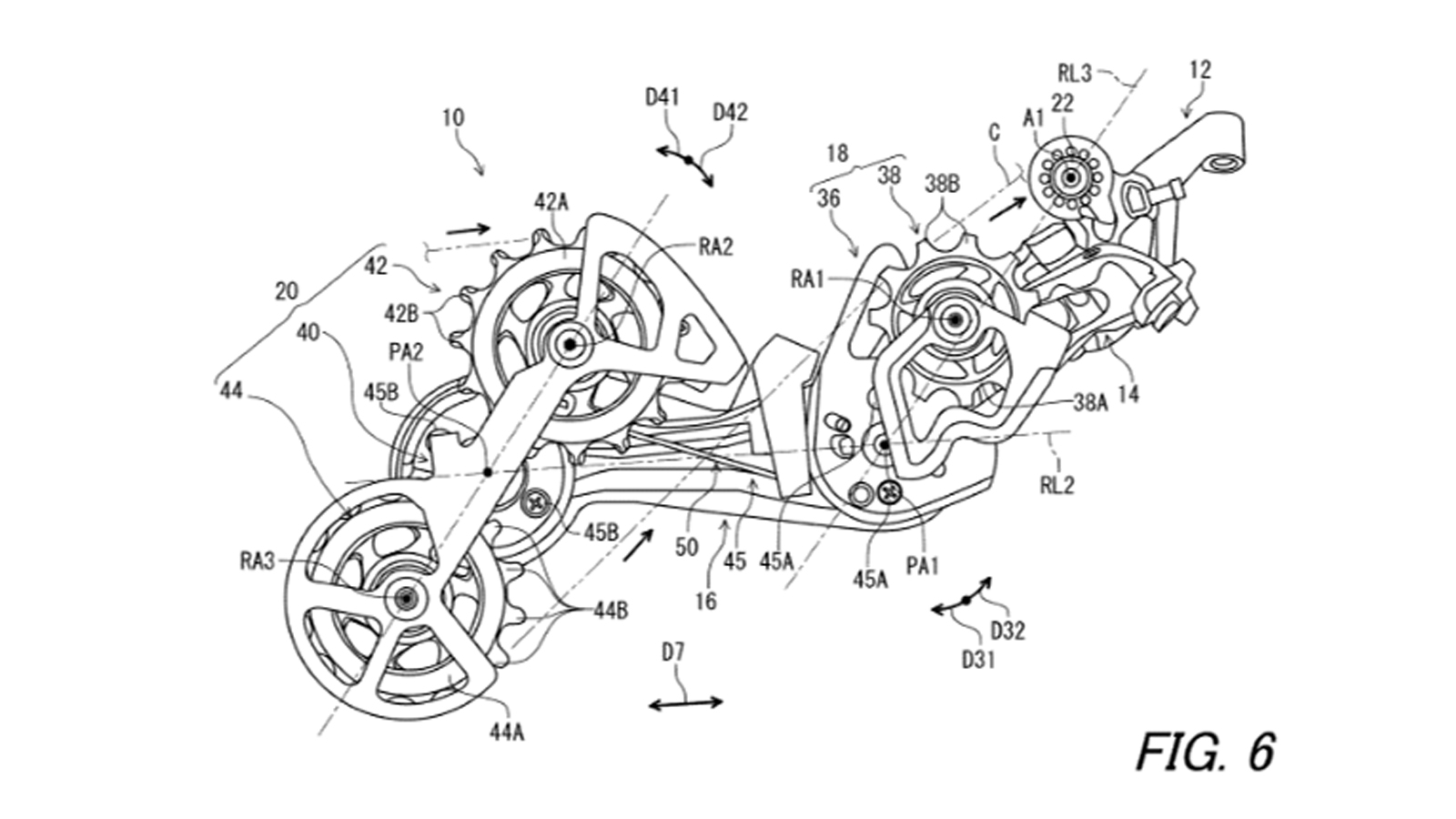
This second cage would then rotate to aid in taking up the slack, depending on the position of the parallelogram, and thus, the gear the rider is in. Exactly how the second cage would rotate seems to be up for discussion. It appears Shimano is looking to use a cable or wire-based system that, with the change in position of the parallelogram, would create a cam system to pull the second cage into position. Shimano has provided multiple diagrams using slightly different end results of how this would work.
That aside, Shimano does include diagrams showing the derailleur position for a range of different gears, also showing the chain line and routing.
In the following gallery of images, the line marked 'C' on the diagrams denotes the chain, with the arrow showing the direction of its travel. The large circles - RS1 to RS12 - denote the cassette sprockets, while the three further circles, RA1, RA2 and RA3, are the derailleur's pulley wheels.
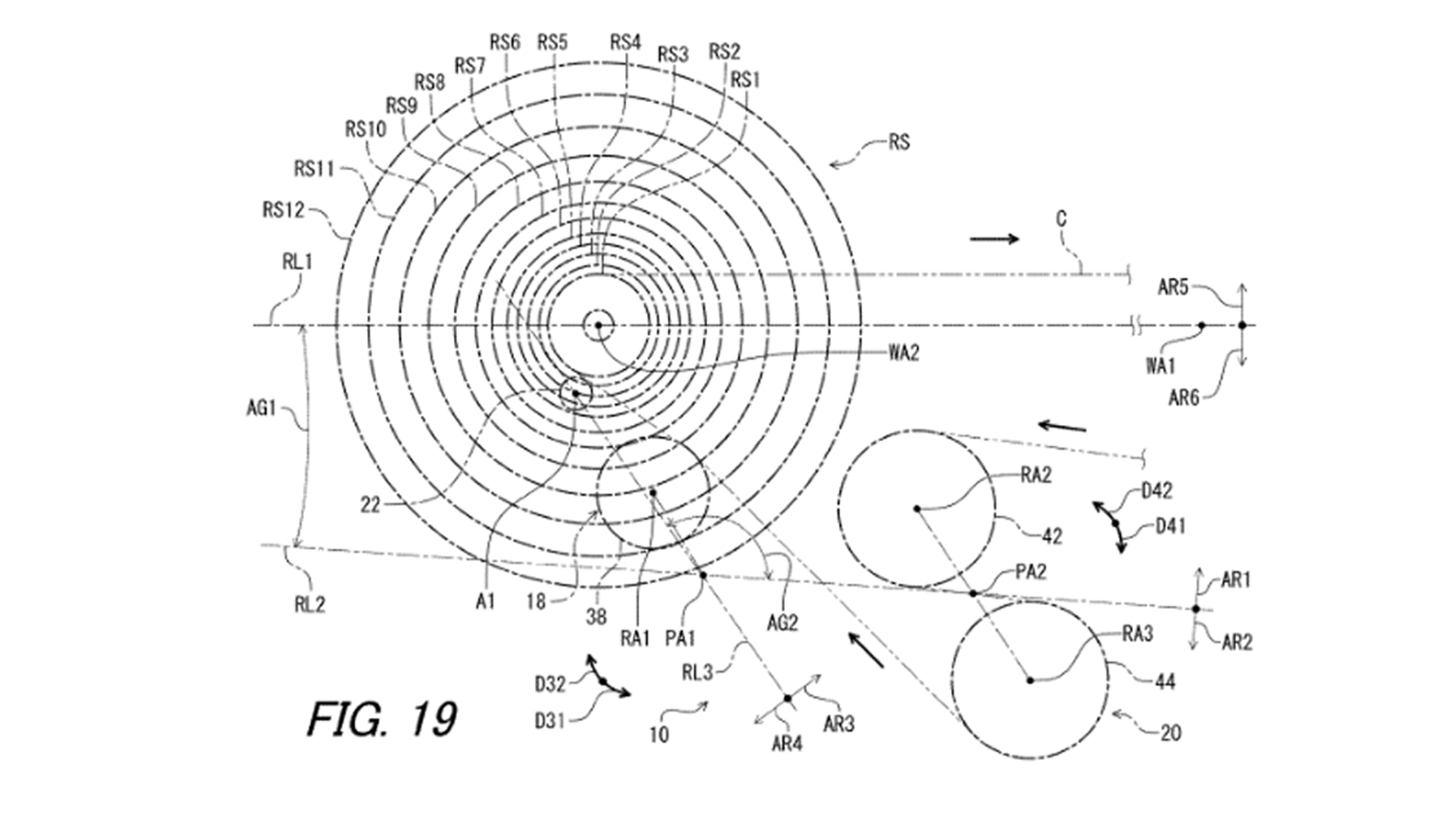
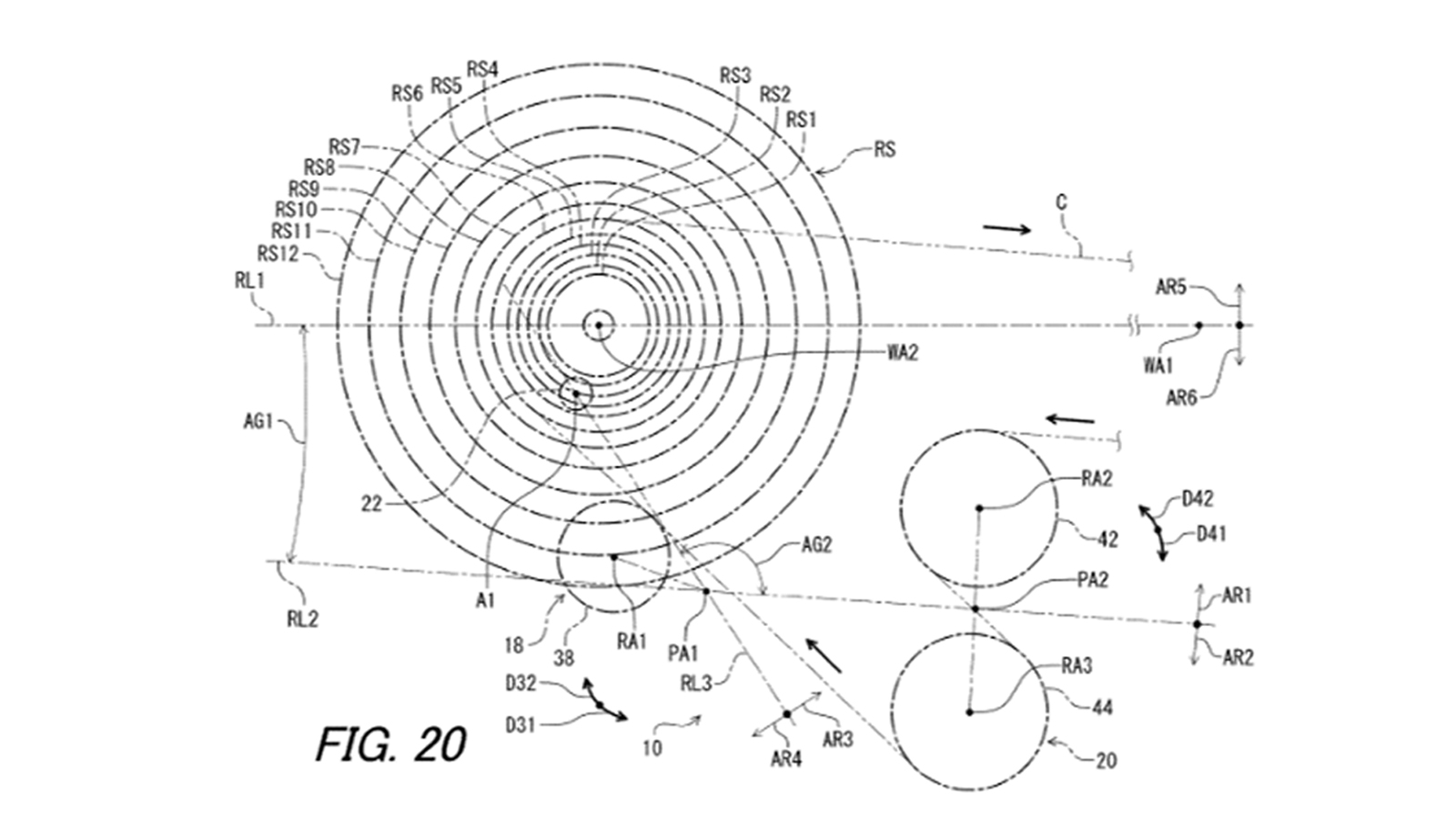
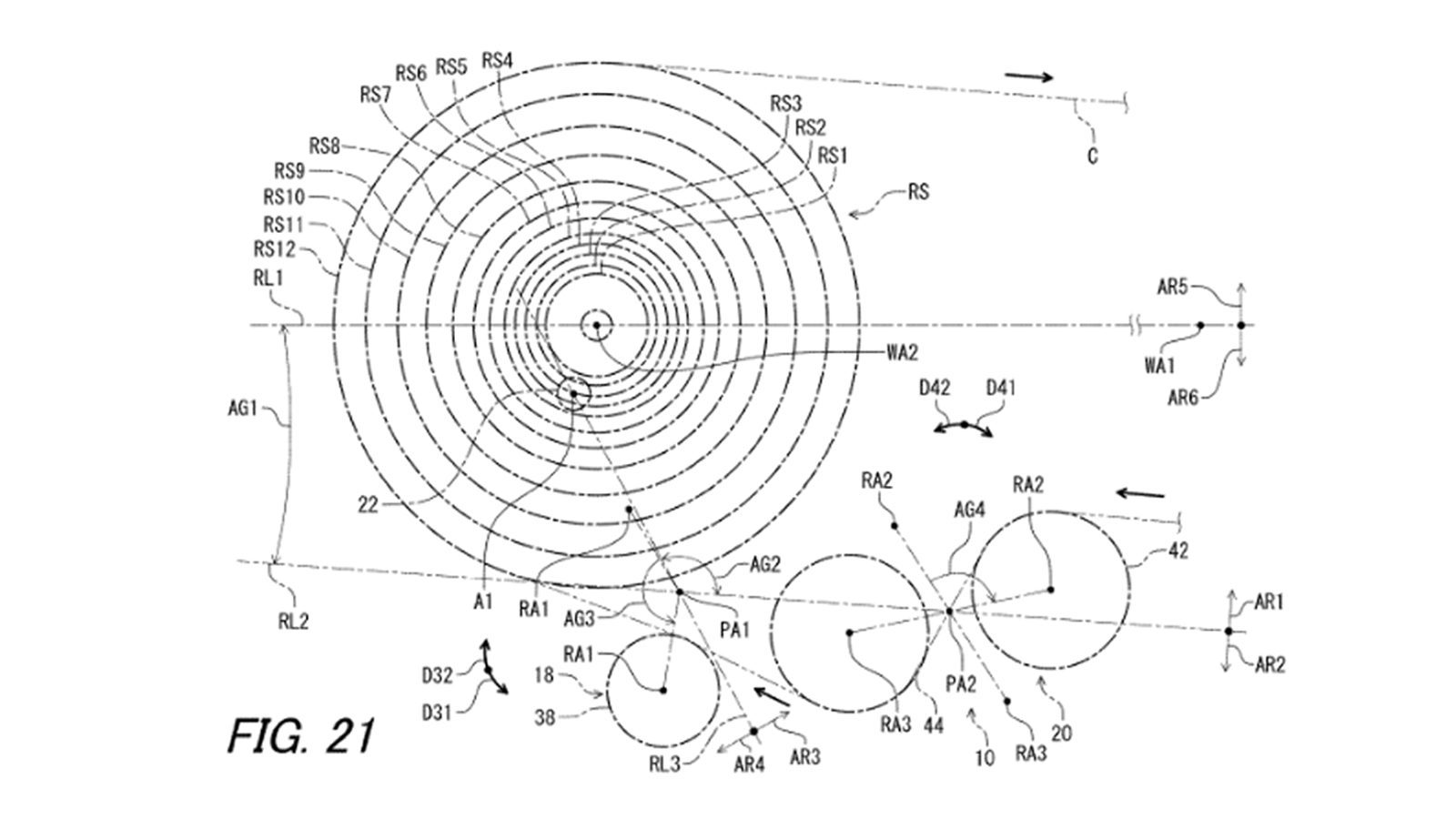
Not unlike the three wild patents from Sram we covered recently, we're unsure how far along the process from idea to reality this derailleur is, nor do we know if it will ever make it into production. What we do know is that it's not the first time a brand has considered a rethink of how bicycles shift.
For example, hub gears are already commonplace in certain cycling sectors, namely commuting, with Shimano's Alfine and Nexus hubs being ubiquitous in the space.
CeramicSpeed - who will be happy with the idea of a third pulley wheel, given their main business is selling oversized versions - has a subsidiary company called Driven, whose driveshaft-based shifting system has been attempting to reinvent the groupset for a number of years now. In 2019, Shimano again filed a patent for a gearbox that would place all shifting at the bottom bracket.
Other brands have tried their hand, too, with Belgian brand Classified finding success in recent years with its two-speed internal hub that can be paired with traditional groupsets, effectively removing the need for a front derailleur.

Josh is Associate Editor of Cyclingnews – leading our content on the best bikes, kit and the latest breaking tech stories from the pro peloton. He has been with us since the summer of 2019 and throughout that time he's covered everything from buyer's guides and deals to the latest tech news and reviews.
On the bike, Josh has been riding and racing for over 15 years. He started out racing cross country in his teens back when 26-inch wheels and triple chainsets were still mainstream, but he found favour in road racing in his early 20s, racing at a local and national level for Somerset-based Team Tor 2000. These days he rides indoors for convenience and fitness, and outdoors for fun on road, gravel, 'cross and cross-country bikes, the latter usually with his two dogs in tow.